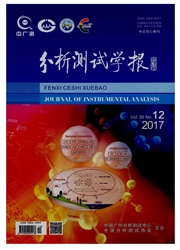

 中文摘要:
中文摘要:
比较了植物血凝素(PHA)与金色葡萄球菌肠毒素(SEA)对外周血单个核细胞(PBMCs)的刺激效果。取健康人外周静脉血,分离得到PBMCs,分别加入PHA及SEA进行刺激并孵育12 h,利用原子力显微镜和倒置荧光显微镜观察细胞形态变化,利用量子点联合共聚焦显微镜观察活化后细胞膜表面CD3、CD69的分布情况,利用流式细胞术检测淋巴细胞活化早期细胞分化抗原CD69分子表达的变化情况。结果显示,丝裂原PHA刺激的淋巴细胞大多成群聚集,而超抗原SEA刺激的淋巴细胞大多呈分散状,且二者形态有明显差异;两组活化后淋巴细胞的体积均大于静息组,且活化过程中发生极化作用,迁移淋巴细胞,形成膜突起;丝裂原和超抗原刺激淋巴细胞12 h后,使淋巴细胞表达CD69抗原分子,但在量表达上存在差异性(PHA:39.5%±8.7%;SEA:8.3%±1.8%),抗原分子CD3和CD69在膜表面呈不均匀分布,且SEA活化后的T淋巴细胞表面受体CD3和CD69分子在空间上形成了微结构域;外周单个核细胞中其它非T细胞在丝裂原或者超抗原的刺激下也能表达活化抗原分子CD69。
 英文摘要:
英文摘要:
The stimulation effects of phytohemagglutinin( PHA )and staphylococcal enterotoxin A (SEA) on peripheral blood mononuclear cells(PBMCs) in vitro were compared. PBMCs were isolated from peripheral blood of healthy donors by the Ficoll - Hypaque gradient density method, and were then stimulated and cultured with PHA and SEA for 12 h, respectively. Atomic force microscopy (AFM) and inverted microscope were used to observe the variation of cell morphology ; laser scanning confocal microscopy(LSCM) combined with quantum dots(QDs)was used to observe the distributions of CD3 receptor and activated marker CD69 receptor on the cell membrane surface after activation and flow cytometry (FCM)was used to analyze the expression of the differentiation antigen CD69 on the cell surface in earlier activation period. Results showed that most of the lymphocytes stimulated by mitogen PHA aggregated in groups, whereas those stimulated by the superantigen SEA scattered ; the volume of activated lymphocytes in both groups were greater than that of resting group. During the activation process, polarization and migration of lymphocytes occurred forming protruding membrane. The mean relative amount of CD69 expression after stimulating PHA ( 39.5% ± 8.7% ) were higher than that after stimulating SEA (8.3% ± 1.8% ). Based on the above results, the activation state and efficiency of lymphocytes, as well as the stimulation features of superantigen SEA were further understood. The results may be helpful for the study of the killing effect of superantigen on tumor cells.
 同期刊论文项目
同期刊论文项目
 同项目期刊论文
同项目期刊论文
 Photoinactivation effects of hematoporphyrin monomethyl ether on Gram-positive and -negative bacteri
Photoinactivation effects of hematoporphyrin monomethyl ether on Gram-positive and -negative bacteri Atomic Force Microscope-Related Study Membrane-Associated Cytotoxicity in Human Pterygium Fibroblast
Atomic Force Microscope-Related Study Membrane-Associated Cytotoxicity in Human Pterygium Fibroblast Sonodynamic Effects of Hematoporphyrin Monomethyl Ether on CNE-2 Cells Detected by Atomic Force Micr
Sonodynamic Effects of Hematoporphyrin Monomethyl Ether on CNE-2 Cells Detected by Atomic Force Micr Detection of erythrocytes in patient with elliptocytosis complicating ITP using atomic force microsc
Detection of erythrocytes in patient with elliptocytosis complicating ITP using atomic force microsc Curcumin induced nanoscale CD44 molecular redistribution and antigen-antibody interaction on HepG2 c
Curcumin induced nanoscale CD44 molecular redistribution and antigen-antibody interaction on HepG2 c An easy method to detect the kinetics of CD44 antibody and its receptors on B16 cells using atomic f
An easy method to detect the kinetics of CD44 antibody and its receptors on B16 cells using atomic f AFM- and NSOM-based force spectroscopy and distribution analysis of CD69 molecules on human CD4(+) T
AFM- and NSOM-based force spectroscopy and distribution analysis of CD69 molecules on human CD4(+) T Cold Induces Micro- and Nano-Scale Reorganization of Lipid Raft Markers at Mounds of T-Cell Membrane
Cold Induces Micro- and Nano-Scale Reorganization of Lipid Raft Markers at Mounds of T-Cell Membrane Nanostructure and nanomechanics analysis of lymphocyte using AFM: From resting, activated to apoptos
Nanostructure and nanomechanics analysis of lymphocyte using AFM: From resting, activated to apoptos NSOM- and AFM-based nanotechnology elucidates nano-structural and atomic-force features of a Y-pesti
NSOM- and AFM-based nanotechnology elucidates nano-structural and atomic-force features of a Y-pesti Label-free oligonucleotide detection method based on a new L-cysteine-dihydroartemisinin complex ele
Label-free oligonucleotide detection method based on a new L-cysteine-dihydroartemisinin complex ele Connection between biomechanics and cytoskeleton structure of lymphocyte and Jurkat cells: An AFM st
Connection between biomechanics and cytoskeleton structure of lymphocyte and Jurkat cells: An AFM st Electrochemical activity of holotransferrin and its electrocatalysis-mediated process of artemisinin
Electrochemical activity of holotransferrin and its electrocatalysis-mediated process of artemisinin 期刊信息
期刊信息
